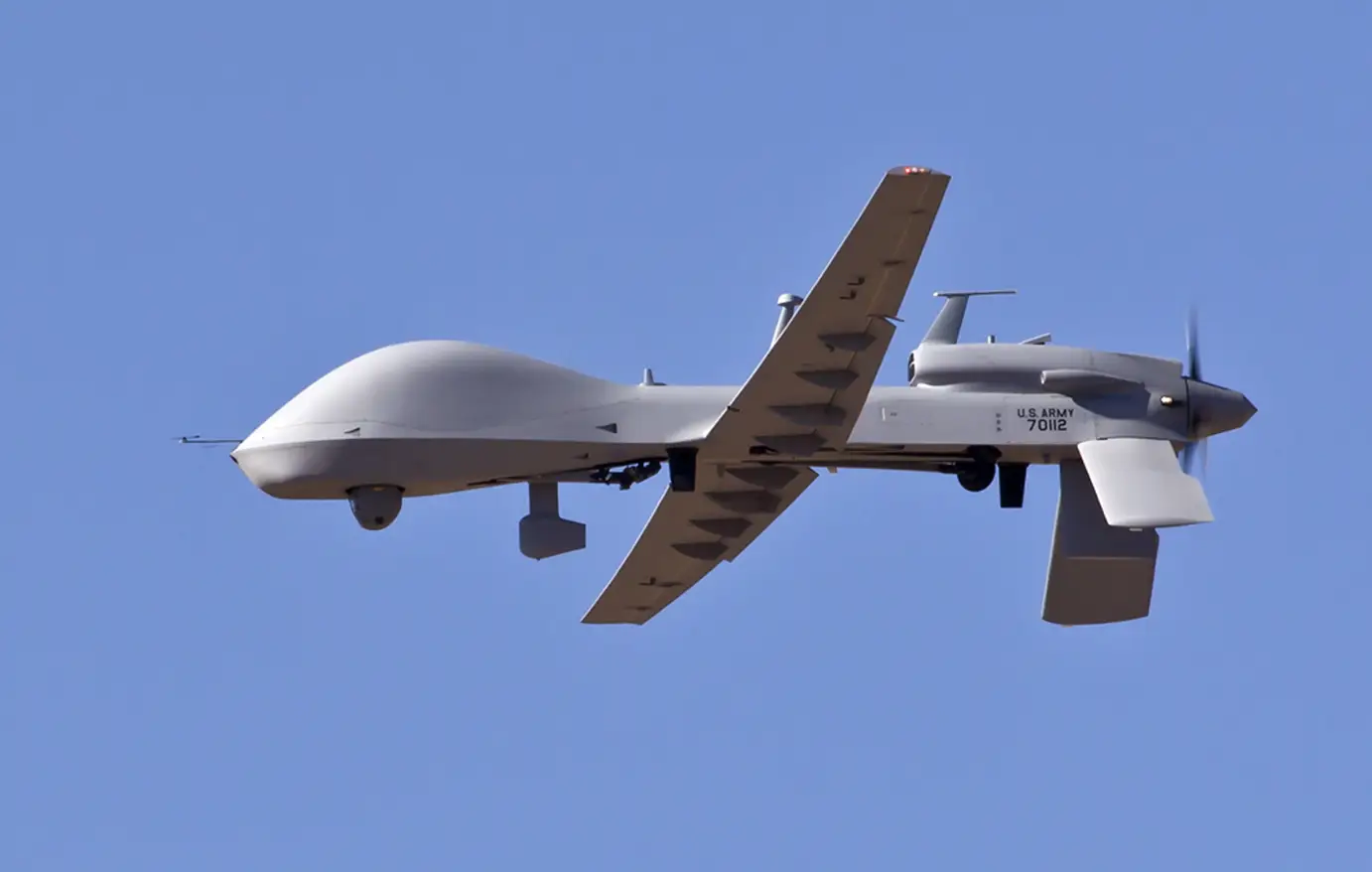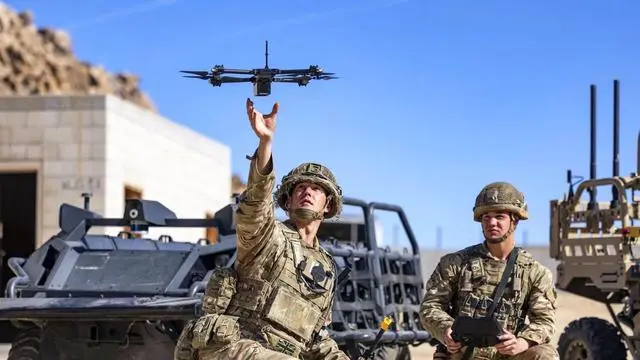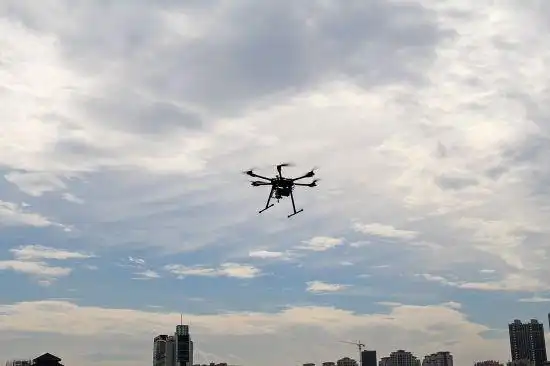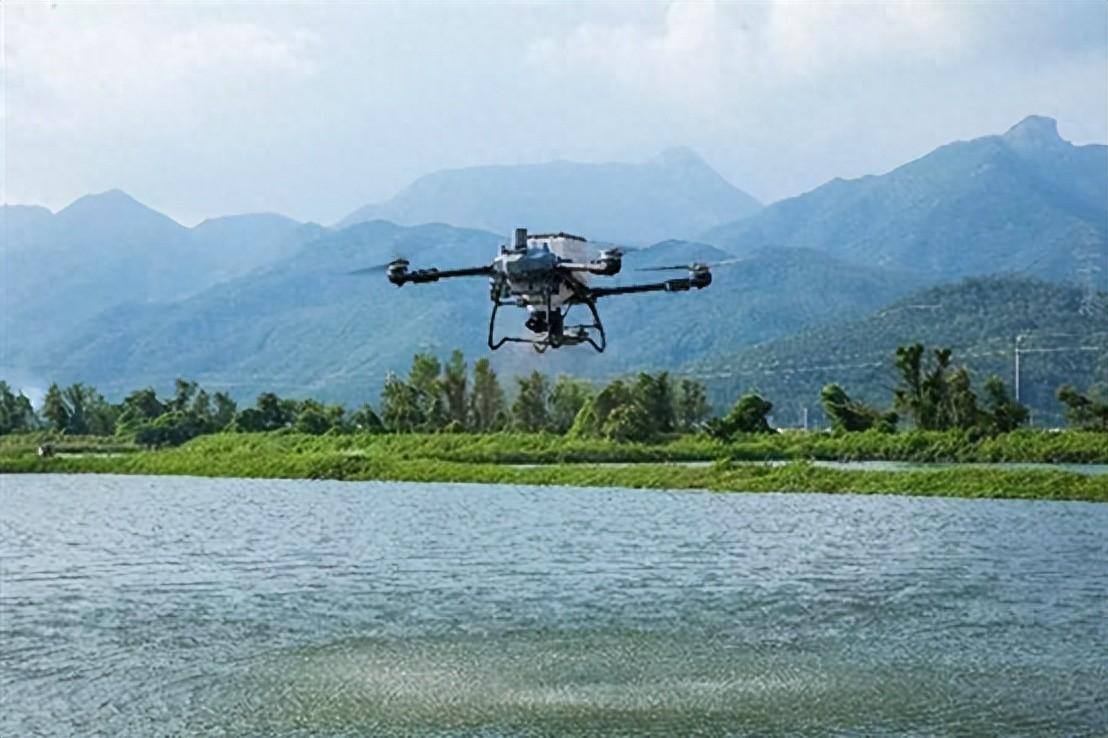Iran's military exercise uses' Gaza 'drones for the first time, and there may be' credit 'from the United States behind it

According to CCTV News on January 27th, on the 26th local time, the Iranian Islamic Revolutionary Guard Air and Space Force used the "Gaza" heavy drone for the first time in military exercises, successfully destroying predetermined targets.
At present, Iran is conducting its largest military exercise in history, using various advanced weapons. Against the backdrop of the Hada ceasefire agreement, Iran has publicly participated in the exercise with a heavy unmanned aerial vehicle named "Gaza", which is similar in appearance to the US "Reaper" reconnaissance strike integrated unmanned aerial vehicle, attracting public attention.
According to the official Iranian news agency, the drone has a wingspan of 22 meters, a flight time of 35 hours, and a speed of 350 kilometers per hour. The Gaza drone is capable of carrying items weighing at least 500 kilograms and can carry up to 13 bombs. The drone has a range of 7000 kilometers and a combat radius of 4000 kilometers.
Iranian drones can be said to be one of Iran's most well-known weapons (Iran's ballistic and cruise missiles are also widely recognized weapons), including the Iranian version of the Predator (Witness-129), the Iranian Motorbike suicide drone (Witness-136), and the Iranian version of the Sentry stealth drone (Witness-171), which often attract attention or discussion due to their high exposure in the media. The "Gaza" drone is also known as the Iranian version of the "Reaper" drone due to its resemblance in appearance to the American "Reaper" drone.
The "Gaza" drone is similar to the American "Reaper" drone and is likely to have a "divine assist" from the American side. In November 2018, the commander of Iran's Islamic Revolutionary Guard Corps Aerospace Forces claimed that they had successfully "captured" a US MQ-9 Reaper drone. In February 2019, the Iranian Islamic Revolutionary Guard Corps also released a video claiming to have successfully controlled the control system of the MQ-9 drone. The video shows that an MQ-9 drone made a hard landing 10 kilometers away from a US military base in the Middle East, while another MQ-9 drone flew overhead and launched missiles to destroy the hard landed drone, preventing leaks.
The MQ-9 drone is an upgraded version of the American atomic company's MQ-1 Predator reconnaissance and strike integrated drone, which entered service in 2007. It is larger in size and uses a more powerful turboprop engine, allowing it to carry more reconnaissance equipment and weapons. The weapon attachment points have been increased from two to four on the MQ-1, capable of carrying AGM-114 "Haierfa" air to ground missiles, GBU-12 laser guided bombs, and "Stinger" air-to-air missiles, greatly enhancing ground attack capabilities. After entering service, the aircraft was widely deployed in the Middle East, Afghanistan and other regions, and is the main large-scale reconnaissance and strike integrated unmanned aerial vehicle of the US military.
In fact, this is not the first appearance of the "Gaza" drone. The aircraft made its public debut in May 2021 and participated in large-scale military exercises and conducted live fire attacks for the first time. From an external perspective, the "Gaza" drone heavily references the basic design of the American MQ-9 "Reaper" drone, using a Y-shaped tail wing that can simultaneously function as a vertical tail and a horizontal tail, providing longitudinal and heading stability. The front three landing gears are equipped with a multi-channel electro-optical turret below the nose, and the engine is located at the tail. According to analysis, it is a Canadian Pratt&Whitney PT6A-25 turboprop engine, which is an internationally renowned aviation engine with a production quantity of tens of thousands of units. Iran can obtain it from the international market. According to analysis, the designers of the "Gaza" drone extensively used composite materials, such as epoxy resin composite materials and carbon fiber, in order to reduce weight.
As a drone with attack capabilities, the "Gaza" drone has a very powerful mounting, with 8 external attachment points under the wings and a belly bomb bay under the fuselage. The bomb bay is equipped with a rotating hanger similar to a strategic bomber, which can carry 5 small ammunition. This is also an innovative design of the "Gaza" drone. The wing hanger can also choose a composite hanger. Under normal circumstances, the "Gaza" drone can carry 13 ammunition, which can be said to be the "bomb truck" among drones. In terms of ammunition, the aircraft can carry various types of small precision guided ammunition developed by Iran, including the "Sadid" small missile (with a range of 6 kilometers), the "Baraban" satellite guided glide bomb, and the "BINA" bomb.
Iran's high-profile announcement of the participation of "Gaza" drones in exercises has attracted attention from the outside world. So, what is Iran's purpose?
The author believes that one important purpose of Iran's high-profile public participation in the live fire exercise of the "Gaza" drone is to showcase the technical capabilities of Iranian drones to the outside world, and to convey to the outside world in a "picture and truth" way: this drone is not a model, but a drone that can fly into the sky to carry out missions. The "Gaza" drone has long-range and reconnaissance capabilities, and its mounting capacity is even stronger than the American MQ-9 drone. It is a large drone that has entered the world's advanced ranks. This represents the latest level of Iran's drone industry, indicating that Iranians have mastered the relevant technology of large-scale reconnaissance and attack integrated drones, and there are only a few countries that have mastered this technology and deployed it in actual combat. Even some countries with developed aviation industries do not have models comparable to it.
Iran has gradually mastered unmanned aerial vehicle technologies such as reconnaissance and attack integrated unmanned aerial vehicles, long-range suicide bombers, long-range reconnaissance, stealth unmanned aerial vehicles, etc. by imitating and digesting unmanned aerial vehicle technology, starting from early simple reconnaissance unmanned aerial vehicles. Technological progress has been significant. And gradually building a diversified military drone force, playing a unique role in the regional military landscape, and demonstrating a distinctive path in technological innovation and tactical application that meets its own strategic needs.
Through the "Gaza" drone, Iran has demonstrated its level of drone technology and considered promoting drone exports. In May 2022, Iran announced on the 17th that it had opened a drone production line in Dushanbe, the capital of Tajikistan. The report stated that this was Iran's first time launching a weapons and equipment production line abroad. In August of the same year, Commander Hajizadeh of the Iranian Islamic Revolutionary Guard Corps Aerospace Forces stated that Iran was developing rapidly in the military field and had the ability to export drones. The Russia-Ukraine conflict and the Middle East conflict further expanded Iran's drone technology output. At present, Iran has produced approximately 40 different models of military drones, including the Ababeel series, Kaman series, Kian series, Mohajer series, and Shahed series, with the Shahed and Mohajer series being the most famous. The "Gaza" drone belongs to the Shahed series, and in the future Iran may promote the "Gaza" drone or related technology to relevant countries to generate revenue for Iran and as a tool for strategic games.
The second purpose is to showcase Iran's drone warfare capabilities. Nowadays, drones have become an important means of long-range strike and reconnaissance in Iran, especially suicide drones, which can launch strikes on targets up to 2000 kilometers away. At present, Iran is conducting the grand "Great Prophet 19" land, sea, and air joint military exercises. The exercise began on January 4th and lasted for two months, making it the largest military exercise in the history of Iran's armed forces. The participating personnel include the Iranian military and the Iranian Revolutionary Guard Corps (IRGC), with various new weapons and military facilities unveiled for the first time, including new anti-aircraft missiles, underground missile bases, drones, and more.
On January 13th local time, 1000 strategic drones designed and produced by the Iranian military and the Ministry of Defense were deployed to the Iranian military. The military introduced that these drones have the characteristics of a range of over 2000 kilometers and strong killing power, which can perform special missions, increase border reconnaissance capabilities, and improve the combat effectiveness of military drone formations in dealing with long-range targets. The Gaza drone is one of Iran's most advanced drones, and live ammunition participation in the exercise indicates that Iran's drone capabilities have been further enhanced.
Some analysts believe that Iran's large-scale exercise at this time is a demonstration of its ability to conduct comprehensive strikes and defense against Israeli and American military bases in the Middle East, including the ability to protect nuclear facilities. Iran hopes to deter the United States and Israel through large-scale exercises to prevent them from launching a new round of military strikes against Iran. Ballistic missiles, cruise missiles, and drones are among the few weapons that Iran fears from the United States and Israel. Publicly deploying "Gaza" drones and deploying thousands of strategic drones are also part of its deterrence.
Thirdly, the high-profile public release of "Gaza" drones also expresses political support for Hamas and Iran's concern about the situation in Gaza. On January 15th local time, Israel and the Palestinian Islamic Resistance Movement (Hamas) reached an agreement on a ceasefire in Gaza. On the 16th, the Islamic Revolutionary Guard Corps of Iran issued a statement regarding the ceasefire agreement reached in the Gaza Strip. The end of the conflict and ceasefire is a great victory for Palestine, but a failure for Israel. The "Gaza" drone is one of Iran's most advanced large-scale drones, with an overall technological level that has reached the international mainstream advanced level. Naming it after "Gaza" is clearly a political concern in Iran regarding the situation in Gaza.





